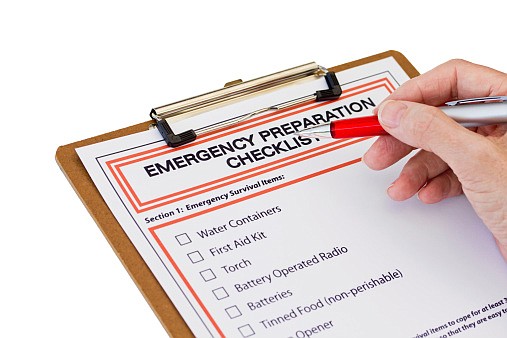Families can cope with disasters by preparing in advance and working together as a team. If something were to happen, how would you contact one another, how would you get to a safe place, and what would you do in different emergency situations? Planning what to do before a disaster strikes provides the best protection for you and your family.
Create a Family Communication Plan
Because you and your family may not be together when a disaster hits, it’s important to create a communication plan to help you and your loved ones connect and get help. Complete a contact card for each family member. Have them keep these cards handy in a wallet, purse, or backpack.
More Tips:
- Identify an out-of-town contact, such as a friend or relative, who family members can call to let them know they are safe. It may be easier to make a long-distance phone call than to call across town, because phone lines can be jammed. An out-of-town contact may be in a better position to communicate among separated family members.
- Teach your family members how to text. It may seem like second nature to some of us, but not everyone texts. During an emergency it’s often easier to get a text message delivered rather than a phone call.
- Subscribe to an emergency alert system. Check with your local health department or emergency management agency to see if there is one offered for your area. Post emergency telephone numbers by home phones or save them in your cell phone (fire, police, ambulance, etc.).
- Teach children how and when to call 911 for help.
Create a Family Disaster Plan
Photo of an evacuation route sign along side a highway Planning for a disaster means knowing what to do in each possible situation. Whether you have to evacuate your home or you need to shelter in place, it’s important to have a plan ahead of time.
Before creating your disaster plan, it’s important to know what types of emergencies are likely in your area and the best way to respond. For example, if tornadoes are common in your area does your family know what the warning signs are and where to take shelter? Call your Local Red Cross chapter or Emergency Management Agency for more information.
Because different disasters may require you to go to different places, make sure you identify a meeting place in your neighborhood, a meeting place just outside your neighborhood, and a meeting place out of town. Review these plans with all members of your family and don’t forget to consider what you would do with your pets who may not be allowed in emergency shelters.
More Tips:
- Learn about your community’s warning signals. What do they sound like and what you should do when you hear them?
- Determine the best escape routes from your home. Find two ways out of each room.
- Find the safe spots in your home for each type of disaster. For example, during an earthquake you would want to practice “drop, cover, and hold on” under a sturdy desk or table. During a tornado, you would want to seek shelter in a lower level room without windows.
- Show each family member how and when to turn off the water, gas, and electricity at the main switches.
- Teach each family member how to use the fire extinguisher, and show them where it’s kept.
- Practice your plan by quizzing your kids periodically and conduct fire and other emergency drills.
- Check your emergency supplies throughout the year to replace batteries, food, and water as needed.
Additional Ways to Prepare
- Check if you have adequate insurance coverage to cover possible flooding or structural damage to your home and property.
- Install smoke detectors on each level of your home, especially near bedrooms. Test and recharge your fire extinguisher(s) and smoke detectors according to manufacturer’s instructions.
- Install at least one battery–powered or battery back-up carbon monoxide alarm in your home, preferably near bedrooms. Test the battery at least twice a year, when you change the time on your clocks.
- Take a Red Cross first aid and CPR class.





